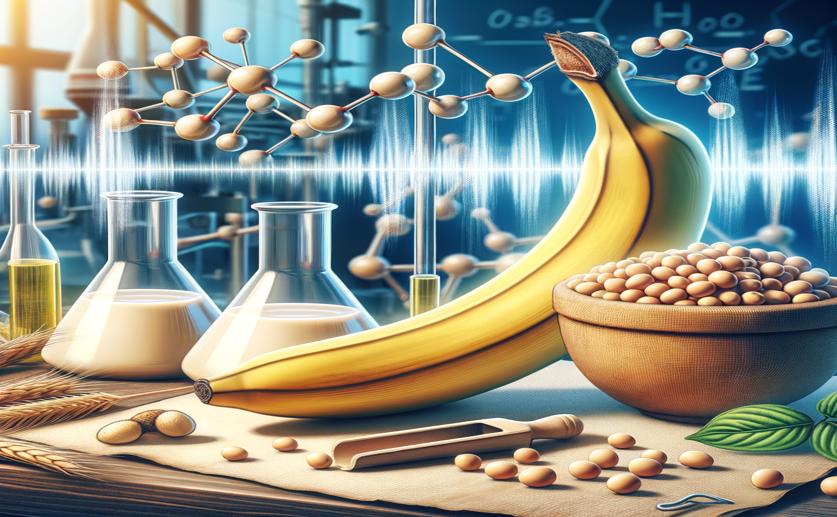
Creating Stable Emulsions with Banana Peel and Soy Protein Using Sound Waves
Jenn Hoskins
16th May, 2024

Image Source: Natural Science News, 2024
Key Findings
- Researchers at Tezpur University used banana peels to create cellulose nanoparticles (CNPs) for stabilizing Pickering emulsions
- The CNPs were combined with soy protein hydrolysates to form stable colloidal nanoparticles, effective as Pickering emulsifiers
- The resulting emulsions showed high stability under various pH and temperature conditions, offering a sustainable solution for food industry applications
References
Main Study
1) Banana peel nanocellulose and soy protein hydrolysate complexed colloidal nanoparticles synthesis using ultrasonic interventions: characterization and stable pickering emulsion formation.
Published 16th May, 2024
https://doi.org/10.1007/s10068-023-01477-w
Related Studies
2) Recent Advances in Food Emulsions and Engineering Foodstuffs Using Plant-Based Nanocelluloses.
3) Fabrication and characterisation of soy protein isolate-grafted dextran biopolymer: A novel ingredient in spray-dried soy beverage formulation.
4) Current Progress in the Utilization of Soy-Based Emulsifiers in Food Applications-A Review.
5) Characterizations of Pickering emulsions stabilized by starch nanoparticles: Influence of starch variety and particle size.



 27th April, 2024 | Greg Howard
27th April, 2024 | Greg Howard